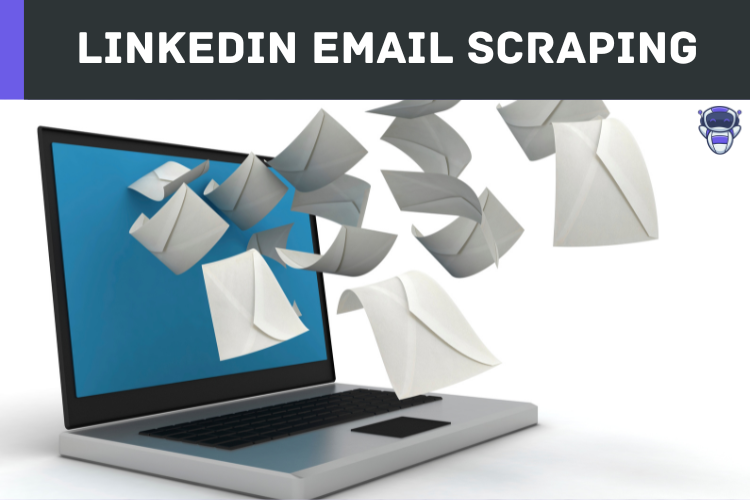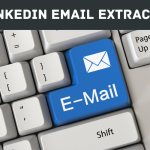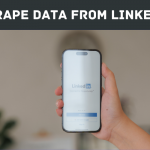Want to start extracting valuable leads from LinkedIn? This guide has all the information you need! Discover how to scrape LinkedIn email addresses, get started fast, and maximize your results.
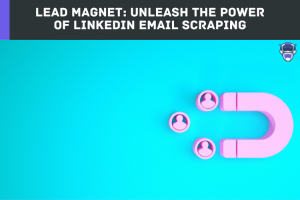
LinkedIn is a powerful platform for professionals to network, find jobs, and build their personal brands. However, it is also a valuable source of leads for businesses looking to expand their customer base. One way to tap into this potential is through LinkedIn email scraping, a technique that allows companies to extract contact information from LinkedIn profiles for targeted email outreach.
With the right tools and techniques, LinkedIn email scraping can be a powerful lead-generation tool that enables businesses to identify high-value leads and convert them into customers through personalized email campaigns.
However, it is essential to approach LinkedIn email scraping ethically and legally to avoid potential risks and ensure the platform’s integrity. In this article, we will explore the power of LinkedIn email scraping and provide guidance on how to use it effectively and responsibly.
Contents
Understanding LinkedIn Email Scraping
LinkedIn email scraping is the process of extracting contact information, including email addresses, from LinkedIn profiles for targeted outreach. This technique allows businesses to identify potential customers and make direct contact with them through email campaigns.
There are several tools and techniques available for LinkedIn email scraping, including browser extensions, desktop software, and web-based services. Some of these tools require manual input, while others use automated algorithms to extract contact information. However, it is important to note that LinkedIn’s Terms of Service prohibit the use of automated tools to extract data from its platform, and violating these terms can result in account suspension or legal action.
Despite the potential risks, there are several benefits to using LinkedIn email scraping as a lead-generation tool. First, it allows businesses to identify high-value leads that are relevant to their products or services. By targeting specific industries, job titles, or keywords, businesses can hone in on the most promising leads and increase their chances of conversion. Additionally, email campaigns can be personalized and tailored to the individual lead, increasing the likelihood of engagement and conversion.
It is important to note that there are also misconceptions about LinkedIn email scraping, such as the belief that it is a spammy or unethical practice. However, when used responsibly and ethically, LinkedIn email scraping can be a valuable tool for businesses looking to expand their customer base and reach new audiences. In the next section, we will explore the different tools and techniques available for LinkedIn email scraping and compare their advantages and disadvantages.
What is LinkedIn Email Scraping?
LinkedIn email scraping is the process of extracting contact information, including email addresses, from LinkedIn profiles for targeted outreach. It involves using software or tools to automate the collection of data from LinkedIn profiles, which can then be used for marketing, sales, or networking purposes.
The process typically involves searching for LinkedIn profiles based on specific criteria, such as job title, industry, location, or keywords, and extracting the contact information from these profiles. This can be done manually or with the use of automated tools that scrape data from multiple profiles at once.
While LinkedIn email scraping can be a powerful tool for lead generation and outreach, it is important to note that it is against LinkedIn’s Terms of Service to use automated tools or bots to scrape data from its platform. Violating these terms can result in account suspension or legal action.
It is also important to use LinkedIn email scraping responsibly and ethically, by targeting only relevant leads and avoiding spammy or unsolicited outreach. By doing so, businesses can leverage the power of LinkedIn email scraping to identify high-value leads and make direct contact with them through personalized email campaigns.
5 Benefits of LinkedIn Email Scraping
There are several benefits to using LinkedIn email scraping as a lead-generation tool:
-
Targeted outreach:
LinkedIn email scraping allows businesses to identify and target specific leads based on criteria such as job title, industry, location, and keywords. This increases the chances of reaching leads who are most likely to be interested in the business’s products or services.
-
High-quality leads:
By using LinkedIn email scraping to identify and target leads who meet specific criteria, businesses can focus on high-quality leads who are more likely to convert into customers.
-
Personalized outreach:
LinkedIn email scraping allows businesses to extract contact information from LinkedIn profiles and use it to personalize email campaigns. This increases the likelihood of engagement and conversion by showing that the business has taken the time to understand the lead’s needs and interests.
-
Cost-effective:
LinkedIn email scraping can be a cost-effective way to generate leads and increase sales, as it does not require expensive advertising or marketing campaigns.
-
Time-saving:
Using automated tools to extract contact information from LinkedIn profiles can save time and resources compared to manually collecting data.
Tools and Techniques for LinkedIn Email Scraping
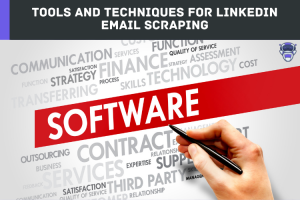
There are several tools and techniques available for LinkedIn email scraping, including:
-
LinkedIn’s own tool for lead generation and outreach, Sales Navigator allows users to search for leads based on specific criteria and extract their contact information. It also includes features for lead management and email campaigns.
-
LinkedIn Email Extractor Extensions:
These are browser extensions that can be added to Google Chrome or other browsers to extract contact information from LinkedIn profiles. Some popular examples include Email Extractor, Lusha, and SalesQL.
-
Desktop Software:
There are several desktop software options available for LinkedIn email scrapings, such as LeadLeaper, Dux-Soup, and Octopus CRM. These tools automate the process of extracting contact information from LinkedIn profiles and can be useful for larger-scale lead generation.
-
Web-based Services:
There are also web-based services available for LinkedIn email scrapings, such as Skrapp and Prospect.io. These services use automated algorithms to extract contact information from LinkedIn profiles and can be useful for smaller-scale lead generation.
Here are the top 5 brands of LinkedIn Email Scraper:
- Emailsearch.io
- LeadStal LinkedIn Leads Generator
- Skrapp.io
- Get prospect LinkedIn Email Finder
- Apollo LinkedIn Email Extractor
How to Identify High-Value Leads through LinkedIn Email Scraping?
Identifying high-value leads through LinkedIn email scraping requires a targeted approach that focuses on specific criteria that are most relevant to the business’s products or services. Here are some steps to follow:
-
Define your target audience:
Identify the characteristics of your ideal customer, such as job title, industry, location, company size, and other relevant criteria. This will help you narrow down your search and identify high-value leads.
-
Use LinkedIn search filters:
Use LinkedIn’s built-in search filters to refine your search and identify leads that meet your target audience criteria. LinkedIn allows you to search for leads based on job title, company, location, industry, and more.
-
Extract contact information:
Use LinkedIn email scraping tools to extract the contact information of your target leads, including email addresses, phone numbers, and social media profiles. Make sure to use ethical and responsible practices when scraping contact information from LinkedIn profiles.
-
Verify the leads:
Once you have extracted the contact information, verify the leads to ensure that the information is accurate and up-to-date. You can use email verification services to verify the email addresses and ensure that they are active and valid.
-
Prioritize high-value leads:
Once you have verified the leads, prioritize them based on their potential value to your business. Focus on leads who are most likely to convert into customers or provide the most value to your business.
Conclusion
In conclusion, while email scraping may appear to be a powerful lead-generation tool, it is important to consider building more connections daily. Building an organic and ethical network is a more effective and sustainable approach to generating leads.
Relying on email scraping, it is advisable to build your network by creating valuable content, engaging with your target audience, and fostering genuine connections with potential clients or partners. This approach may take longer, but it is more sustainable and likely to yield higher-quality leads.
